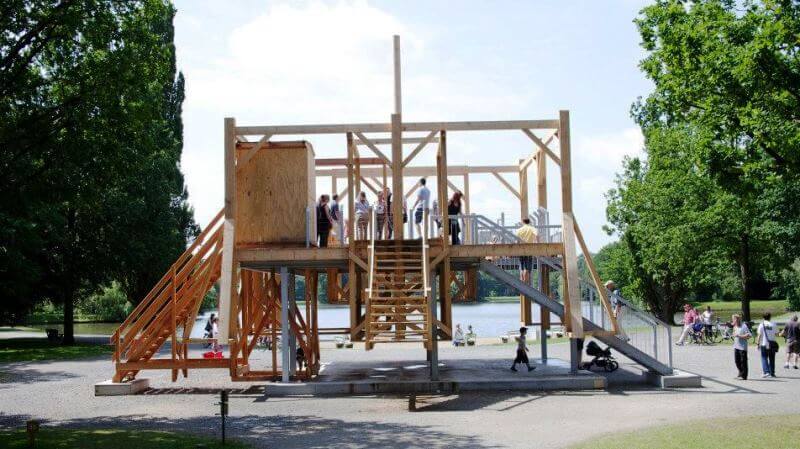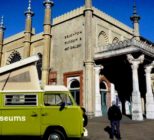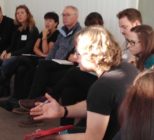The cultural treasures of the past, believed to be dead, are being made to speak, in the course of which it turns out that they propose things altogether different than what had been thought
At this year’s American Alliance of Museums Expo a number of voices were raised in protest about one of the vendor’s displays. LifeFormations had chosen to showcase their work through displaying examples of two figures produced for the Abraham Lincoln Presidential Library and Museum, a shackled black slave being sold by a white auctioneer. It was a provocative choice, the fallout from which provides a fascinating snapshot of some of the issues facing museums today.
AAM’s response was interesting. As reported in Blooloop, the AAM president updated the museum discussion boards and organized a facilitated discussion with LifeFormation’s CEO, noting the issue provided, ‘a real-life case study for the sessions at the conference and although difficult, did start a conversation.’ The report omits the initial response from the vendor (as I was told by colleagues at the conference), which was to cover up the shackled slave figure with a cloth, leaving the un-shrouded auctioneer, in his hat and frock coat, looking more carnie barker than cracker. It sounded an odd reaction and one that turned what the exhibitor claimed to be an example of legitimate interpretation of a difficult history (albeit one horrendously decontextualized by being relocated to a sales floor) into something resembling a piece of bizarre racist cabaret magic.
Wrong and muddle-headed as it was, covering the figure did however have a sort of honesty that turning the protest into a teaching moment lacked. As noted ruefully by more than one contributor to the accompanying twitter debate, why should museums need another conversation about the way black people are poorly represented in museums or yet more free teaching about what they could be doing better? The measured patrician response to anger – with comments boards and facilitation – can seem just disconnected as clumsy misrepresentation. ‘I can see you are really upset about this – would you like to write something down on a post-it note about it?’
There’s a bit more spadework needed by museums to be confident in the face of protest. On the eve of reopening their sculpture park, the Walker Art Center in Minneapolis recently decided to remove a sculpture by Sam Durant following protests by Native Americans – leaving fairly gaping holes in both the park and the museum’s political reputation.

Taking the time to talk to the community most affected by the subject matter – in this case the mass executions of 38 Dakota Indians – is no longer just good manners but a foundation of good practice. Get the history right too. As museums work harder to contextualize collections and become more imaginative in their interpretation, weak historical thinking can too easily be exposed. For difficult or contested histories in particular, rigorous historical discipline is essential. Beyond history, moral foundations have to be both deep and understood. Museums need to have a clear ethical understanding not only of how they do their job but of why they are there in the first place – and these principles need to be exposed in the public decisions the institution makes.
Confederate Memorials
The battle over Confederate memorials in the US captures the complexity of contested heritage. On one hand, New Orleans mayor Mitch Landrieu’s eloquent speech explaining the city’s decision to remove four Confederate monuments has been widely cited as an inspirational example of doing the right thing. On the other, equally eloquent counter arguments have been made that the monuments should remain to defend deeper principles – such as that made by Sophia Nelson, arguing that the work of museums and heritage sites such as Montpelier, Mount Vernon and the National Museum of African American History and Culture to present America with its history, flaws and all, is a more powerful tool against racism than the suppression of memorials or “wrong” ideas.
If museums are about inclusion – about extending the greatest diversity of representation and creating the fullest possible picture of our heritage – how can taking away any subject’s rights to representation ever bring us closer to that goal? Which is the better response – to throw a cloth over history that offends us or to hold it to account? Perhaps nowhere has this question been bigger nor more directly addressed than in Günther Domenig’s 2001 Documentation Centre Nazi Party Rally Grounds museum – a steel and glass ‘fuck you’ that both penetrates and exposes the hubris of the Nazi’s monumental Nuremberg Congress Hall.
Colston Hall
In Bristol, the recent decision to rename Colston Hall – to decouple the popular venue from slave trader Edward Colston – was made in response to a vocal and articulate protest campaign. However, there is a danger that, by removing the link with Colston, an uncomfortable truth about the city will be further obscured – namely that much of the philanthropy responsible for its schools, hospitals and infrastructure was funded by slavery.
Interestingly the same campaign is asking for the city’s public statue of Colston to be removed and relocated to a museum – suggesting a distinction between the display of artefacts as public art to honour a subject and their display as museum exhibits to remember a subject. That distinction is critical in the collecting and interpretation of contested histories.
Protest should never be something that makes us feel afraid, startled or guilty – and certainly never so much as to make kneejerk and reactionary responses. No matter how noisy, we should feel confident not only of the positions we take but also of the unique role we play. There can be something wild and beautiful about the terrible agency of a revolutionary mob tearing down the statues of a hated tyrant but it’s the people, not museums, who get to decide what to think and feel about their monuments – and which ones to smash up. As museums, our job is to patiently pick up the pieces, to catalogue them and to make sure as much of them as possible is preserved so that the people will have the most evidence and the best information available when it comes to deciding which statues to put up next.
Main Image
For the Abraham Lincoln Presidential Library and Museum, LifeFormations created almost 50 lifelike figures representing key moments throughout the life and times of Abraham Lincoln. One of them, dipicting a slave owner and slave, caused controversy when it was shown at the American Alliance of Museums Expo last month in St Louis, Missouri










